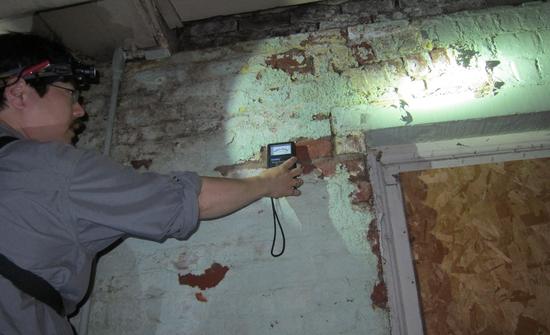Freeze-Thaw Risk: Site Visit
Back to Recommended Freeze-Thaw Risk Assessment Steps
Inspection by a building scientist can often identify existing moisture problems (due to rainwater, rising damp, air leakage, etc.) that must be addressed before any insulation is added. Inspection can also identify buildings that are at the extreme ends of the risk spectrum. For example, if unheated parts of the building exterior (such as a parapet or unused chimney) are in good condition, then there is less risk in making the rest of the exterior colder (as will happen when insulation is added inside the walls). Similarly, if exterior brick currently has high rain exposure due to a broken or missing downspout and is not experiencing degradation, it is unlikely that insulation together with addressing such water management issues will result in new degradation. Site assessments are not foolproof – for example, a chimney might be made of different bricks than the main cladding and a parapet might dry better than an insulated wall because it is exposed to the sun at the back. However, the degree of certainty provided by a site visit is adequate for many projects, and is always a solid starting point for further investigation.
Site inspections should include the interior and exterior of walls and should check for:
- poor masonry details that concentrate water (windowsills, band details)
- poor water management details (disconnected downspouts, roof-wall interfaces)
- existing freeze-thaw damage (parapet, chimney, at-grade, below windows)
- rain leaks (are they large/small? Often/rare? Active/inactive?)
- rising damp issues
- air leakage condensation issues
- interior condensation issues
- air sealing and thermal bridging issues
- brick construction details (are all bricks similar? Are there obvious replacements?)
Next Steps
- If a site visit reveals needed repairs, then the repairs should be done; if there is strong evidence that a retrofit will be safe, it can proceed. Regular maintenance and monitoring should follow this work. Go to: Repair/Retrofit, Maintain and Monitor.
- If the level of uncertainty is too high, more evidence should be gathered through material testing. Go to: Material Testing.

